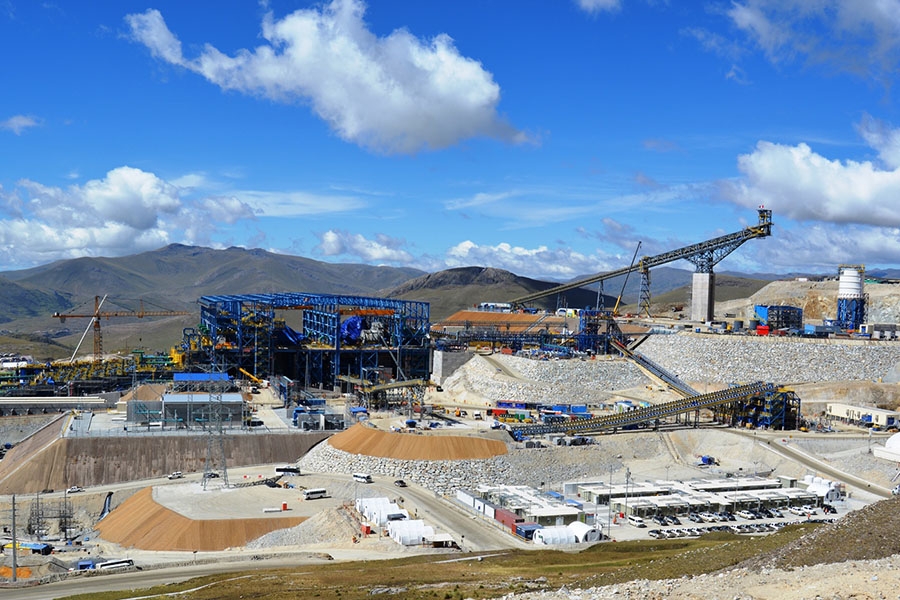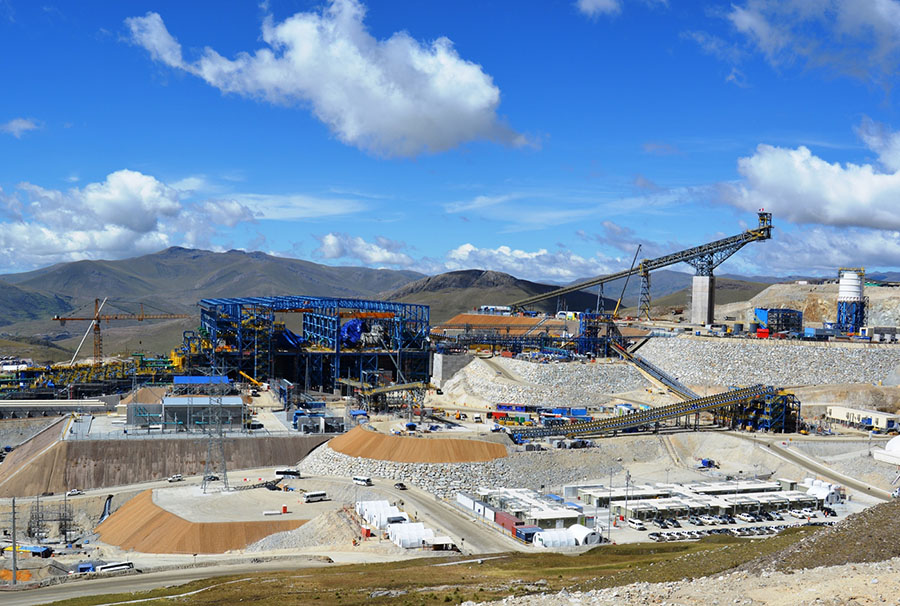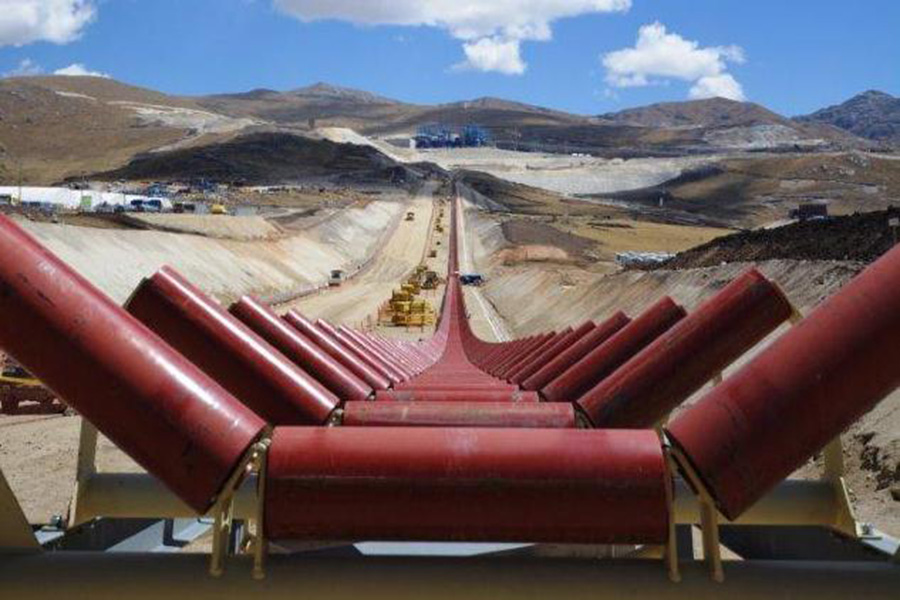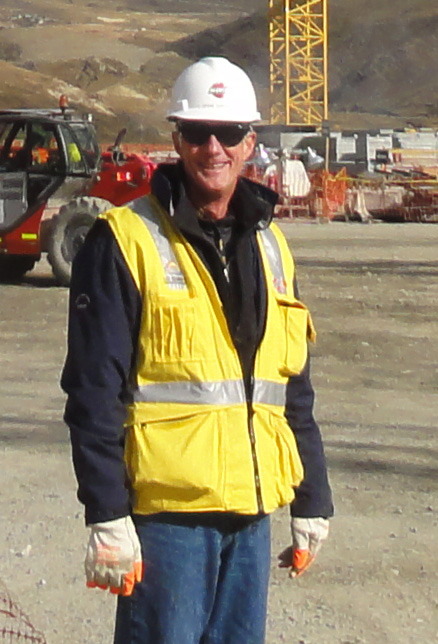
 Bechtel crews are building the copper concentrator for a new mine high in the Peruvian Andes. Once the mine starts producing early in 2016, it will be one of the top sources of copper in the world. Two Georgia Tech alumni, Steve Curtis and Justin Norman, are helping lead the $8 billion project to engineer and build the concentrator and some of the infrastructure needed to even get to the site. (Photo Courtesy of Justin Norman.) |
What’s your commute to work like? Maybe 30 minutes or an hour in the car. Perhaps a ride on a commuter bus or train. If you’re lucky, you might ride a bike — or simply walk across campus to class.
For Georgia Tech alumni Steve Curtis and Justin Norman, it’s much more complicated.
Their commute involves plane flights, buses, pickup trucks and, on a good day, a helicopter. All told, it takes between six and 15 hours to get from home to work, depending on the weather and mode of travel.
That’s because they’re working on a massive construction project high in the Peruvian Andes for Bechtel, building the copper concentrator for an $8 billion mine project that will be among the world’s top-producing sources of copper from its very first year.
“One challenge presented by this project is that it is a greenfield. There was no infrastructure of any kind when we arrived. Water, power and all other services had to be designed, procured and constructed,” said Norman, who earned his bachelor’s degree in building construction in 1997 and is the project controls manager for the Bechtel portion of the work. That includes engineering, procurement and construction of the process plant and some infrastructure.
“The scale of the mine, concentrator and other facilities is immense,” he said. “We peaked at over 12,000 contracted personnel spread out across five camps and one village. I have been on projects with similar numbers, but the remoteness and access issues have complicated transport of materials and people.”
“The project is at 4,200 meters above sea level. The altitude takes some getting used to,” said Curtis, who graduated in 1977 with a civil engineering bachelor’s. “Many new visitors get sick the first day or two at the site.”
 The switchback road trucks have to travel up the mountain to the reach the Las Bambas work site where Tech alumni Steve Curtis and Justin Norman are helping build a copper concentrator with Bechtel. (Photo by Andy Phelps.) |
Curtis typically works 14 days on site, followed by seven days off. He said that remoteness means a different lifestyle for workers, one that’s devoid of many of the diversions and comforts most of us are used to.
“We are living in a camp. There are no stores, no restaurants, no movies. The options are to work, eat and sleep while at the camp,” he said. “Justin and I go to a gym in the mornings. Running, stationary bike or lifting weights at altitude is a different experience. You can run out of breath just doing sit-ups.”
Curtis is Bechtel’s deputy project manager for the huge undertaking, which has injected $44 million into a local economy that has traditionally focused on subsistence farming, according to the company. Bechtel says it has hired 1,500 local workers and helped train them for higher-skill jobs like welding or surveying.
It’s just the beginning of changes for the area once the concentrator is finished and the mine starts producing copper — along with significant by-products of gold, silver and molybdenum.
 An overland conveyor workers use to move materials at the remote Las Bambas site high in the Andes Mountains in Peru. At its peak, work on the site employed 12,000 people. (Photo Courtesy of Justin Norman.) |
“Traffic on the road will be the most significant impact to the local communities,” Curtis said. “There will be significant truck traffic carrying copper concentrate from the mine to a port in Southern Peru. [MMG, the mine’s owner,] has spent, and will spend, a lot of money for local infrastructure, local training, job creation programs, use of local businesses, etc., to provide assistance and support to the local communities.”
Curtis said his work on this project, and others with Bechtel’s Mining and Metals Group, has been much more exotic than the three decades he spent working mostly on transportation projects in Atlanta and Washington D.C.
“The culture with Bechtel is quite interesting,” he said. “In a very short period of time, you can work on several projects in very remote parts of the world.”
“As a construction student, I had imagined that I would be working more on commercial-type work as opposed to heavy industrial,” Norman said. “I have found the work I do much more satisfying and challenging in terms of not only the construction, but also in terms of everything that I have been exposed to across all engineering disciplines — civil, mechanical, control systems, process — and how they all come together to complete and hand over a functioning facility to our clients.”

|
MEET STEVE CURTIS How long have you been with Bechtel? Have you worked for other companies? Is this the kind of work you wanted to do when you were studying to become a civil engineer? Why did you want to be an engineer? What other kinds of projects have you worked on in your career? |
MEET JUSTIN NORMAN How long have you been with Bechtel? Have you worked for other companies? Why did you want to do this kind of work? What other kinds of projects have you worked on in your career? |


